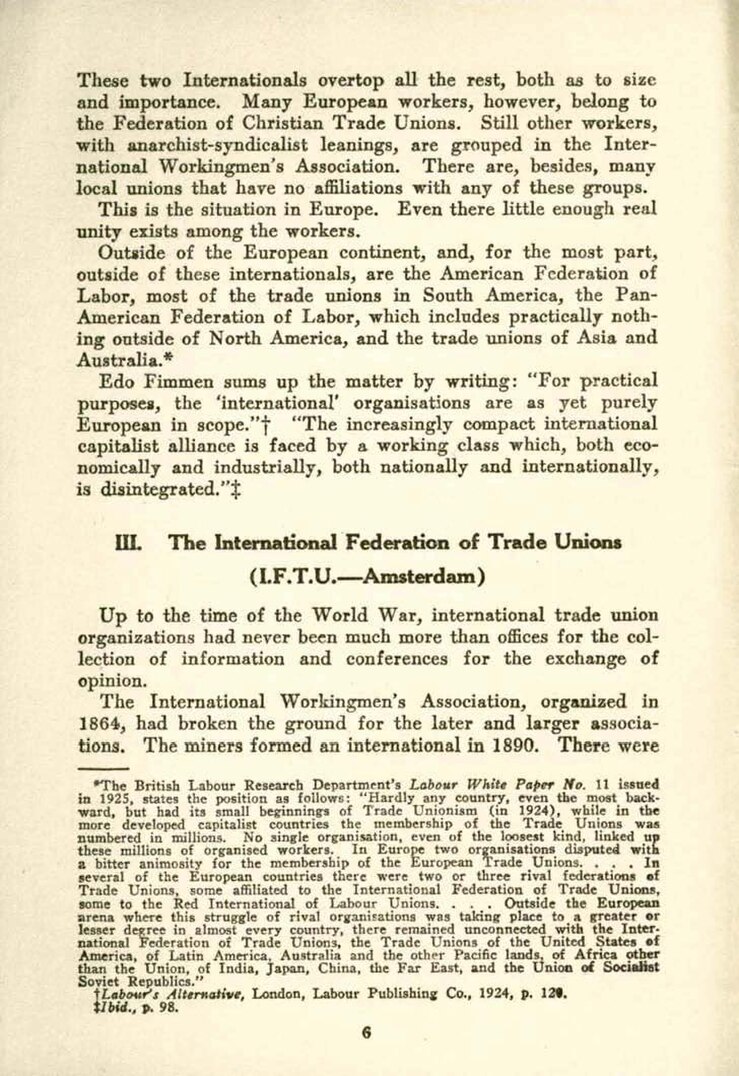These two Internationals overtop all the rest, both as to size and importance. Many European workers, however, belong to the Federation of Christian Trade Unions. Still other workers, with anarchist-syndicalist leanings, are grouped in the International Workingmen's Association. There are, besides, many local unions that have no affiliations with any of these groups.
This is the situation in Europe. Even there little enough real unity exists among the workers.
Outside of the European continent, and, for the most part, outside of these internationals, are the American Federation of Labor, most of the trade unions in South America, the Pan-American Federation of Labor, which includes practically nothing outside of North America, and the trade unions of Asia and Australia.[1]
Edo Fimmen sums up the matter by writing: "For practical purposes, the 'international' organisations are as yet purely European in scope."[2] "The increasingly compact international capitalist alliance is faced by a working class which, both economically and industrially, both nationally and internationally, is disintegrated."[3]
III. The International Federation of Trade Unions
(I.F.T.U.—Amsterdam)
Up to the time of the World War, international trade union organizations had never been much more than offices for the collection of information and conferences for the exchange of opinion.
The International Workingmen's Association, organized in 1864, had broken the ground for the later and larger associations. The miners formed an international in 1890. There were
- ↑ The British Labour Research Department's Labour White Paper No. 11 issued in 1925, states the position as follows: "Hardly any country, even most backward, but had its small beginnings of Trade Unionism (in 1924), while in the more developed capitalist countries the membership of the Trade Unions was numbered in millions. No single organisation, even of the loosest kind, linked up these millions of organised workers, In Europe two organisations disputed with a bitter animosity for the membership of the European Trade Unions. … In several of the European countries there were two or three rival federations of Trade Unions, some affiliated to the International Federation of Trade Unions, some to the Red International of Labour Unions. … Outside the European arena where this struggle of rival organisations was taking place to a greater or lesser degree in almost every country, there remained unconnected with the International Federation of Trade Unions, the Trade Unions of the United States of America, of Latin America, Australia and the other Pacific lands, of Africa other than the Union, of India, Japan, China, the Far East, and the Union of Socialist Soviet Republics."
- ↑ Labour's Alternative, London, Labour Publishing Co., 1924, p. 120.
- ↑ Ibid., p. 98.
6
